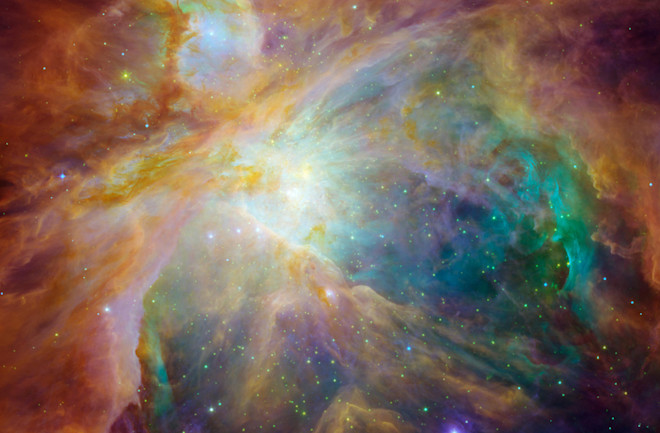When it comes to the universe, most cosmologists argue, what you see is not what you get. In fact, the latest survey of the Big Bang’s residual light suggests that more than 84 percent of the matter in the cosmos is of the “dark” variety: exotic particles unlike the ordinary atoms that make up our everyday world and the objects therein.
Dark matter, according to current orthodoxy, is largely responsible for the formation of galaxies, galaxy clusters and larger entities, and it also provides the gravitational glue needed to keep these structures intact. In countless galaxies observed to date, stars orbit the galactic center so quickly that gravity alone shouldn’t be enough to keep galaxies from flying apart. The picture makes more sense when you introduce hidden, invisible matter to hold the galaxies together. Furthermore, computer simulations of the universe have largely reproduced the cosmos we see today by following a recipe of roughly 5 parts dark matter to 1 part regular matter.
Yet there is a rather significant catch. No one has ever detected a single dark matter particle, and no one can say for certain what it would consist of. “Why are all the dark matter searches coming up empty-handed?” asks Stacy McGaugh, an astronomer at Case Western Reserve University in Cleveland. His answer runs contrary to the conventional wisdom: “It’s possible it ain’t there.”
For the past two decades, McGaugh has reluctantly played the role of the doubter. He was a dark matter enthusiast like most of his peers, but he started losing faith in the mid-1990s when he realized that models predicated on the invisible stuff didn’t match up with the phenomena he was witnessing in galaxies.
Instead, McGaugh is considering an idea called Modified Newtonian Dynamics, or MOND. Although many astronomers regard it as blasphemous, MOND has consistently outperformed dark matter models in describing the motions of stars and gases in galaxies. Instead of relying on new, hypothetical types of matter, this alternative theory merely tweaks Isaac Newton’s laws of gravity to strengthen the gravitational pull as needed. If gravity plays by different rules than we thought, MOND advocates suggest, we might be able to explain galaxy dynamics, and other puzzling aspects of the universe, without having to invoke dark matter at all.

